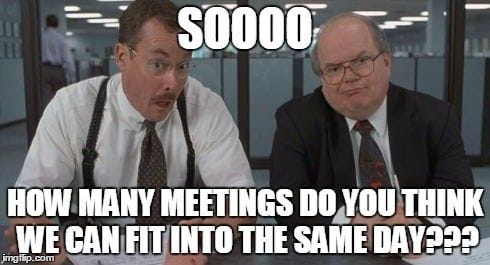Sprint 62 :: Guide to Outcome-Oriented Product Management
In the dynamic world of technology product management, the ability to prioritize effectively is a skill that can make or break a team. The common pitfall of becoming a feature factory, churning out one feature after another without strategic alignment or customer impact, is a red flag that should be avoided at all costs.
In this article, we'll explore the art of prioritization, highlight potential red flags in product management and discuss the importance of being an outcome-oriented team.
The Art of Prioritization: More Than Just a To-Do List
Prioritization is not simply about creating a to-do list; it's about making strategic decisions that align with the overall goals of the product and the company. As a seasoned Tech Product Manager, I've often encountered teams drowning in a sea of tasks, with little clarity on what truly matters.
Example: Imagine a scenario where a product team is bombed with requests for new features from different stakeholders. Without a robust prioritization framework, they risk spreading themselves thin, leading to delayed timelines, frustrated stakeholders and (LAST BUT NOT LEAST) a confused development team. To avoid this, establish clear criteria for prioritization, such as impact on key metrics, alignment with strategic goals and feasibility.
Red Flags in Product Management: Watch Out for These Warning Signs
Identifying and addressing red flags is crucial for maintaining a healthy product development cycle. Here are some common red flags to watch out for:
Feature Overload: If your team is constantly pushing out features without a clear understanding of their impact or user value, you might be in the feature factory danger zone.
Example: I once worked with a team that prided itself on releasing new features every week. However, the metrics didn't budge and user satisfaction remained stagnant.
The lesson here is clear - focus on quality over quantity.
Lack of Customer Validation: A product manager's worst nightmare is building features that customers don't want or need. Without customer validation, you risk wasting time and resources on misguided efforts.
Example: A company invested heavily in a feature that was intended to be a game-changer, only to find out through user feedback that it missed the mark. Regularly involve customers in the development process to avoid such missteps.
Ignoring Technical Debt: Ignoring the looming shadow of technical debt can lead to long-term issues that hinder product development and innovation.
Example: A team consistently pushed for new features, neglecting the underlying codebase's health. Eventually, the product became so bogged down by technical debt that any further development became a herculean task.
Outcome-Oriented Teams: Actions Speak Louder Than Words
Rather than measuring success by the number of features shipped, focus on outcomes that truly matter. An outcome-oriented team emphasizes delivering value to users and achieving meaningful results.
Example: A team set out to improve user engagement by 20%. Instead of just adding new features, they analyzed user behavior, identified pain points, and implemented changes that resulted in a significant uptick in engagement. The outcome mattered more than the number of features implemented.
Actions Speak Louder Than Words: Cut Through the Talk
It's easy to get lost in discussions, meetings and endless planning sessions. As a product manager, it's crucial to emphasize action over talk. Set clear goals, define actionable steps, and empower your team to execute.
Example: I once led a project where discussions on a new feature went on for weeks without any progress. Frustrated, I took the initiative to prototype a solution based on the existing insights. The tangible prototype ignited momentum and the team rallied to bring the concept to life.
In conclusion, successful product management is about more than just shipping features. It's about strategic prioritization, recognizing and addressing red flags, and fostering an outcome-oriented mindset. By embracing action over excessive talk, you'll not only steer clear of the feature factory trap but also lead your team towards delivering impactful results.
After all, in the world of product management, it's not about how much you do, but how well you do it.
The Product Land ⛰️
Wanna know more? Stay tuned and subscribe for the next sprints! ☟
Subscribed
And also.. get in touch with us if you want to! 🌐







